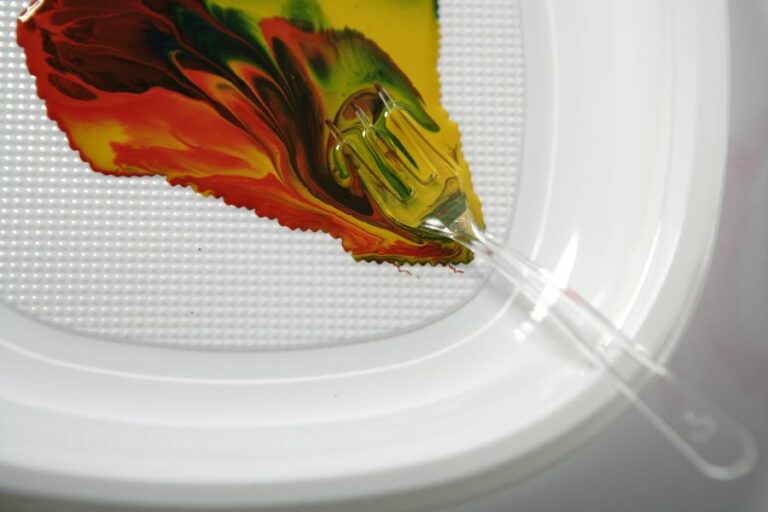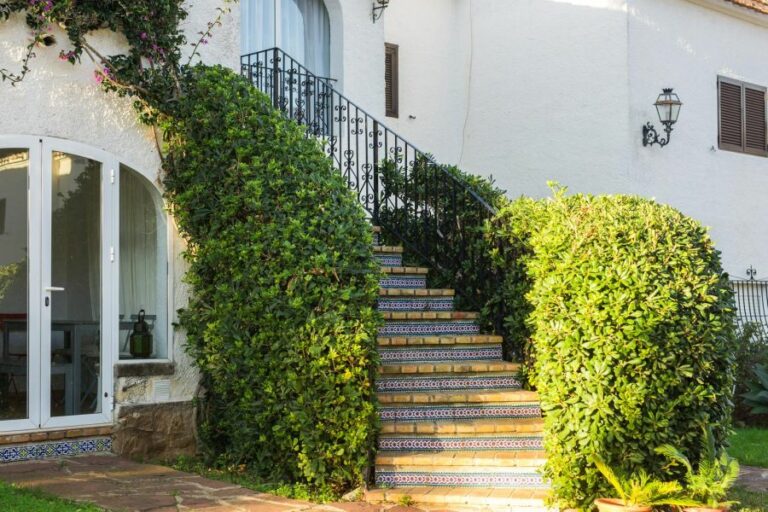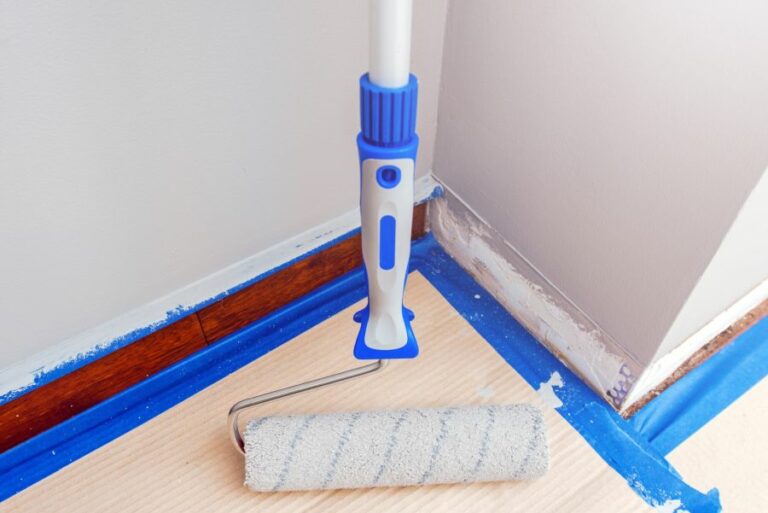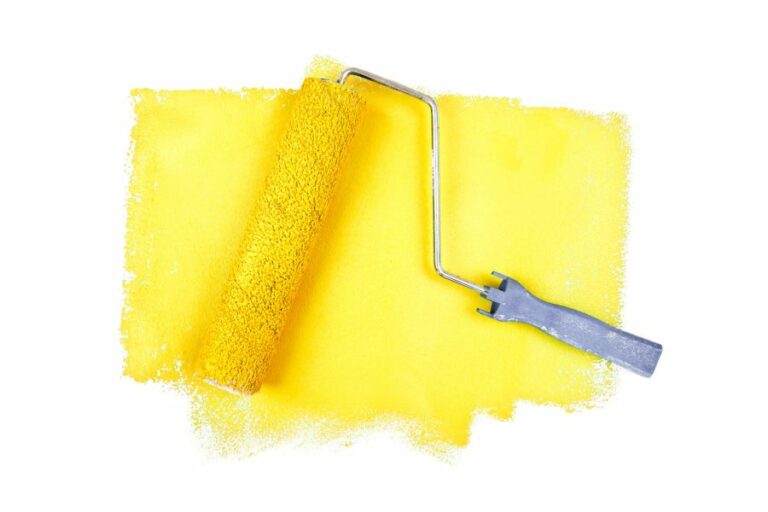Outdoor Gloss Paint, 25 Things You Should Know
Welcome to our in-depth guide on outdoor gloss paint, the ultimate solution for transforming your exterior surfaces with style and durability! Let’s explore the wonders of this high-performance paint, specifically engineered to protect and beautify your outdoor spaces. Understand how it withstands weather adversities, retains its elegant finish, and requires low maintenance.
Outdoor gloss paint:
Outdoor gloss paint provides a vibrant, durable finish for exterior surfaces, offering resistance to fading, chalking, and peeling. It is easy to clean and enhances curb appeal. Consider factors like oil-based vs. water-based, color, and coverage when choosing the right paint. Ensure proper surface preparation, use quality brushes, apply thin, even coats, and maintain a wet edge for a professional finish. Regular maintenance, such as cleaning and addressing paint issues, will keep surfaces looking fresh for years.

Discover the best outdoor gloss paint for your next project with our comprehensive guide. Explore the top brands, durability factors, and application tips to achieve the perfect balance of protection and aesthetics for your exterior surfaces. Keep reading and learn to beautify your outdoor spaces!
Contents
- 1 Exterior High-Gloss Finish Paint
- 2 Is it Suitable to Apply Gloss Paint to Exterior Surfaces?
- 3 What is the Optimal Gloss Level for Exterior Paint Applications?
- 4 Which is more suitable for exterior paint: Gloss or semi-gloss finish?
- 5 Is High Gloss Exterior Paint Available?
Exterior High-Gloss Finish Paint
When it comes to giving your outdoor surfaces a vibrant and durable finish, outdoor gloss paint is a perfect choice. These paints are specifically formulated to withstand the elements and stay looking fresh for years.
• The Benefits of Outdoor Gloss Paint
There are numerous advantages to using gloss paint for your outdoor projects. Here are a few key benefits.
1. Durability and Longevity
Outdoor gloss paints are designed to tolerate the elements such as harsh sunlight, rain, and temperature fluctuations. They offer excellent resistance to fading, chalking, and peeling, ensuring that your surfaces remain to look new for years.
2. Easy to Clean
Gloss paints have a smooth finish, which makes them easy to clean. Dirt, grime, and stains can be wiped away with a damp cloth or soft brush, making maintenance a breeze.
3. Enhanced Curb Appeal
The high gloss finish of outdoor gloss paint can add a touch of sophistication and elegance to your property. The rich and vibrant colors bring out the best in your surfaces, improving the overall aesthetic of your home or building.
• Choosing the Right Outdoor Gloss Paint
When selecting the ideal outdoor gloss paint for your surfaces, it’s crucial to consider these factors.
– 1. Oil-based vs. Water-based
Outdoor gloss paints are available in both oil-based and water-based formulations. Each type has its advantages and drawbacks.
- Oil-based: Oil-based outdoor gloss paints are known for their exceptional durability and long-lasting shine. However, they can take longer to dry and release strong fumes during application. You will also need to use mineral spirits or paint thinner for cleaning brushes and spills.
- Water-based: Water-based gloss paints are quicker to dry, have a low odor, and are easier to clean up with water. They offer good durability but may not be as long-lasting as their oil-based counterparts.
Consider the specific requirements of your project and personal preferences when making your choice.
2. Color and Sheen
Outdoor gloss paint is available in a wide range of colors and sheens. When choosing the perfect color for your project, consider factors such as the color scheme of your property, the intended use, and the desired aesthetic. Remember that lighter colors will typically show dirt more easily.
3. Coverage and Drying Time
Always check the paint’s coverage information, which is usually listed on the product label or technical datasheet. This will give you an idea of how many coats may be required and if any primers or undercoats are needed for optimum performance.
Also, consider the drying time, especially if you have time constraints or are working in an area prone to weather variations.
• Application Tips: How to Achieve a Professional Finish
For a smooth and long-lasting finish, follow these essential tips when applying outdoor gloss paint.
1. Surface Preparation
Proper surface preparation is critical for a successful paint job. Thoroughly clean the surface, removing any dirt, grease, or loose paint. Repair any cracks or holes, and sand smooth any rough spots. Finally, use a suitable primer or undercoat for a more even and durable finish.
2. Stir the Paint
Before you begin painting, stir the paint thoroughly. This ensures consistent color and sheen throughout the application. Continue to stir occasionally during use.
3. Use Quality Brushes and Rollers
Choose the right tools for the job. Invest in quality brushes and rollers for smoother application and a better finish. Synthetic brushes are best for water-based paints, while natural bristle brushes are recommended for oil-based paints.
4. Apply Thin, Even Coats
Apply thin, even coats of paint for the best results. Heavy or thick coats may lead to poor adhesion or sagging. Allow the paint to dry completely between coats, as per the manufacturer’s recommendations.
5. Keep a Wet Edge
When painting, always maintain a wet edge by overlapping onto previously painted areas. This will help avoid visible brush strokes and roller marks.
• Essential Maintenance for Your Outdoor Gloss Paint
To keep your surfaces looking their best, perform regular maintenance.
- Clean your painted surfaces at least twice a year with a gentle detergent and a soft brush. Rinse with clean water and allow to dry.
- Inspect your surfaces for any signs of paint deterioration, such as chipping, flaking, or bubbling. Address any issues as soon as possible to prevent further damage.
- If minor touch-ups are required, clean the area and lightly sand before applying a fresh coat of outdoor gloss paint.
By following this guide and selecting the right outdoor gloss paint for your project, you will achieve a beautiful, durable, and long-lasting finish. Happy painting!
Is it Suitable to Apply Gloss Paint to Exterior Surfaces?
Gloss paint, known for its high sheen and durability, is often considered an ideal choice for various indoor painting projects, but have you ever wondered if it can be used outside as well?
• Advantages of Gloss Paint for Exterior Surfaces
Gloss paint offers a number of benefits, which make it an ideal candidate for outdoor use. Some of the key advantages are listed below:
– Durability and Weather Resistance
Gloss paint is highly resistant to wear and tear. This means that it can effectively withstand the harsh conditions that exterior surfaces are exposed to, including direct sunlight, rain, and fluctuating temperatures.
Additionally, it has excellent water repellency, which prevents moisture from seeping into the surface, reducing the risk of mold and rot.
– Easy to Clean
One of the main reasons gloss paint is popular for exterior surfaces is its ease of cleaning. The smooth, hard finish of gloss paint allows dirt and grime to be wiped away with minimal effort, preventing buildup and maintaining a fresh appearance.
– Aesthetic Appeal
Gloss paint provides a radiant finish, adding a touch of elegance to exterior surfaces. In addition, the gloss creates an illusion of depth, making the painted surface appear more vibrant and enhancing its overall aesthetic.
• Choosing the Right Gloss Paint for Exterior Use
Before you decide to use gloss paint outside, it is crucial to select the appropriate type of paint for the specific surface you plan to paint. There are several options available, including oil-based and water-based gloss paints.
– Oil-Based Gloss Paint
Oil-based gloss paint has been the preferred choice for exterior use for many years. It is characterized by its long-lasting finish, excellent adhesion, and resistance to various weather conditions.
However, it has a slower drying time, which can be a disadvantage in an outdoor setting. Additionally, because it requires the use of solvents for cleanup, there are concerns regarding its environmental impact.
– Water-Based Gloss Paint
In recent years, water-based gloss paint has made significant progress in terms of durability and performance. It is more environmentally friendly and has a shorter drying time compared to oil-based gloss paint.
Additionally, it is less prone to yellowing over time, making it a good option for maintaining a crisp, clean appearance.
However, quality can vary greatly among water-based gloss paints, so it is essential to choose a high-quality product specifically designed for exterior use.
• Tips for Applying Gloss Paint to Exterior Surfaces
Applying gloss paint to exterior surfaces effectively requires proper preparation and technique. Here are some essential tips to ensure the best possible results.
– Surface Preparation
As with any paint job, thorough preparation of the surface is critical. This includes cleaning, scraping, filling gaps or cracks, and sanding if necessary. Ensuring a clean, dry, and smooth surface will allow the paint to adhere better and create a more even finish.
– Primer
It is advisable to use a suitable primer before applying gloss paint to exterior surfaces. Primers help to create a consistent base, enhance adhesion, and improve the overall durability of the paint job.
– Environmental Conditions
Pay close attention to weather conditions when planning to paint outside. It is best to avoid painting in excessively hot, cold, or humid conditions. Ideally, the temperature should be between 50°F and 85°F, with relative humidity below 70%, to ensure proper drying and curing.
– Application Techniques
Gloss paint can be applied using a brush, roller, or spray. Each method has its advantages and disadvantages, and the choice depends on the surface you’re painting and your familiarity with the specific technique.
For a professional-looking finish, follow these tips:
- If using a brush, choose one with high-quality, synthetic bristles.
- To prevent brush marks, apply the paint in thin, even coats and avoid overloading the brush.
- When using a roller, opt for one with a short nap to reduce the risk of air bubbles or stippling.
- For spray painting, read the manufacturer’s instructions carefully to ensure correct nozzle size, pressure settings, and spraying technique.
• Final Thoughts
To answer the question, “Can you use gloss paint outside?”: Yes, you can successfully use gloss paint for exterior surfaces, provided that you invest in a high-quality product specifically designed for outdoor use, prepare the surface correctly, and apply it with proper technique.
When done right, a gloss paint finish can provide a durable, weather-resistant, aesthetically appealing solution for various exterior surfaces, ensuring your property not only looks great but stands up to the elements as well.
| Can you use gloss paint outside? | |
|---|---|
| Answer | Yes, you can use gloss paint outside, but it is important to choose a paint that is specifically formulated for outdoor use to ensure durability and weather resistance. |
What is the Optimal Gloss Level for Exterior Paint Applications?
When it comes to exterior paint jobs, a high-quality and durable gloss is crucial for long-lasting results.
• The Importance of Gloss for Exterior Paint
A good gloss finish has a significant impact on the overall appearance and longevity of an exterior paint job. Here are some key reasons why gloss is essential for exterior paint:
- Visual Appeal: A glossy finish adds a polished and attractive look to your home, instantly enhancing its curb appeal.
- Durability: Glossy finishes are more resistant to the effects of weathering, which helps protect your home from the elements, such as sun exposure, rain, and snow.
- Ease of Cleaning: Since high-gloss paint repels dirt and stains, maintaining a clean exterior becomes easier.
• Types of Gloss for Exterior Paint
When it comes to gloss finishes, there are three main categories:
- High Gloss: This finish has the highest level of gloss, providing a smooth and shiny appearance. High-gloss paint is ideal for trim, doors, and shutters.
- Semi-gloss: Offering a moderate level of gloss, this finish is suitable for surfaces that require some shine but don’t need the full gloss effect, such as siding and porches.
- Low-gloss or Satin: This finish has a subtle sheen and is ideal for larger surfaces such as walls and fences, where a more muted appearance is desired.
Each of these gloss types has its advantages and drawbacks, so it’s essential to understand your project’s requirements before making a choice.
• How to Choose the Best Gloss for Your Exterior Paint Project
Here are some essential factors to consider when selecting the appropriate gloss level for your exterior paint job:
– Type of Surface
Different surfaces require different gloss levels. For example, high-gloss paint is ideal for wooden surfaces, as it highlights the wood’s natural beauty and provides a durable, protective layer.
On the other hand, low-gloss paint is typically recommended for masonry surfaces, as it imparts a more natural and muted appearance.
– Climate
The climate in your region plays a crucial role in determining the appropriate gloss level. For instance, if you live in a sunny area, a higher gloss finish is desirable, as it will help protect your exterior paint from the harsh UV rays.
However, if you reside in a region with frequent rain and snow, a lower gloss finish might be more suitable to prevent the surface from becoming too slippery when wet.
– Personal Style
Ultimately, the gloss level you choose should complement your personal style and the aesthetics of your home’s exterior. If you prefer a sleek, modern look, a higher gloss paint might be ideal. However, if you lean more towards rustic and traditional designs, a low-gloss finish might better suit your tastes.
• Recommended Exterior Paint Gloss Brands
Based on extensive research and personal experience, here are some top-performing high-quality exterior paint brands that offer various gloss levels:
- Sherwin-Williams: As a leading paint manufacturer, Sherwin-Williams offers a wide range of exterior paints with varying gloss levels. For a high-performing, high-gloss paint, consider the Emerald Exterior Acrylic Latex Paint.
- Benjamin Moore: Known for its premium quality paints, Benjamin Moore’s Aura Exterior Paint is a popular choice for exterior coloring that offers a range of gloss levels, including semi-gloss and low-gloss options.
- Valspar: If you’re seeking a paint that offers excellent durability and weather resistance, Valspar’s Duramax Exterior Paint is a solid option. It offers various gloss levels, including high gloss and satin (low gloss).
• Tips for Applying Gloss to Exterior Paint
Now that you’ve chosen the best gloss for your exterior paint, consider the following tips for a successful application:
- Proper Surface Preparation: Thoroughly clean and remove dirt, dust, and debris from the surface before painting. This will ensure better paint adhesion and a smoother finish.
- Use Primer: Using a primer will provide better coverage and help your gloss paint adhere more securely to the surface.
- Apply the Correct Number of Coats: Depending on the type of paint and the surface’s condition, apply two or more coats of paint to achieve an even, consistent gloss.
- Observe Proper Drying Time: Allow sufficient time for each coat to dry before applying the next one. This will ensure optimal durability and appearance of the paint job.
• Conclusion
In summary, choosing the best gloss for your exterior paint involves taking into account factors such as surface type, climate, personal style, and brand.
By considering these factors and following the application tips mentioned above, you can achieve a stunning and long-lasting exterior paint job that enhances your home’s appearance and protects it from the elements.
Gloss Type | Description | Advantages | Disadvantages |
|---|---|---|---|
Flat or Matte | Provides a non-reflective appearance and hides surface imperfections. | Excellent at covering imperfections, easy to touch up, and has a smooth appearance. | Less durable, requires more frequent repainting, and difficult to clean. |
Satin or Eggshell | Offers a subtle gloss and is more durable than flat finishes. | More durable than flat finishes, easy to clean, and provides a soft sheen. | May not hide imperfections as well as flat finishes, and touch-ups can be more noticeable. |
Semi-Gloss | Offers a moderate gloss with good durability and is suitable for high-traffic areas and trim. | Durable, easy to clean, and provides a subtle shine. | May not hide imperfections as well as lower gloss finishes, and touch-ups can be more noticeable. |
High-Gloss | Provides the highest level of gloss and is highly durable, suitable for doors, trim, and high-use areas. | Highly durable, easy to clean, and provides a high shine. | May not hide imperfections well, touch-ups can be more noticeable, and can be difficult to apply properly. |
Which is more suitable for exterior paint: Gloss or semi-gloss finish?
When it comes to painting the exterior of your home or property, selecting the right type of paint is essential. The paint you choose, after all, will determine the overall appearance and durability of your home in the years to come.
Two popular choices for exterior paint are gloss and semi-gloss paints, both of which have their own unique advantages and disadvantages.
• Understanding Gloss and Semi-Gloss Paints
Before diving into a detailed comparison, let’s first establish a clear understanding of what gloss and semi-gloss paints are.
– Gloss Paints
Gloss paints, as the name suggests, are characterized by their high sheen and reflective finish. High gloss paints have an increased level of resin and binders, which gives them a more substantial and durable finish. These paints are ideal for areas that receive a lot of contact or that need to be cleaned frequently.
– Semi-Gloss Paints
Semi-gloss paints fall between gloss and satin finishes in terms of sheen level. With semi-gloss, you get a slightly less reflective finish than a full gloss paint but still offers a good balance of durability and shine.
This finish is an excellent choice for those who want some gloss level, without the intense shine of a full gloss paint.
• Key Differences Between Gloss and Semi-Gloss Exterior Paints
Now that we have established a clear understanding of these two paint types, let’s explore the key differences between them and how those differences can affect your decision-making process.
– Durability and Protection
When it comes to exterior paint, durability is a crucial factor to consider. You want paint that can withstand varying weather conditions and protect your home for a considerable amount of time.
- Gloss Paints: Due to their higher resin content, gloss paints are generally more durable and resistant to the elements than semi-gloss paints. They are less likely to fade, peel, or crack under various weather conditions, ensuring a longer-lasting finish.
- Semi-Gloss Paints: While still reasonably durable, semi-gloss paints may not offer the same level of protection as full-gloss paint. However, when properly applied and maintained, they can still provide a long-lasting and durable finish for your exterior surfaces.
– Aesthetics and Finish
The overall appearance and finish of your painted surfaces are essential factors to consider when selecting paint.
- Gloss Paints: The high shine and reflective nature of gloss paints can make them an attractive option for many homeowners. However, due to their reflective properties, they can also highlight surface imperfections and make them more noticeable.
- Semi-Gloss Paints: Semi-gloss paints strike a middle ground between matte and high-gloss finishes. They still offer a noticeable shine but are less reflective and can help hide some surface imperfections better than a full gloss paint.
We recommend taking a close look at the condition of your home’s exterior and considering the look you want to achieve when selecting between these two paint types.
– Application and Maintenance
The ease of application and ongoing maintenance should also be taken into account when selecting exterior paint.
- Gloss Paints: Glossy finishes can be challenging to apply evenly, and they typically require more skill and careful preparation of surfaces. Their smooth surface, however, makes them fairly easy to clean and maintain.
- Semi-Gloss Paints: Semi-gloss paints are generally easier to apply than high-gloss paints and are more forgiving of small mistakes during the application process. Semi-gloss finishes are also relatively easy to clean and maintain, making them a practical choice for busy homeowners.
– Cost Considerations
When comparing gloss and semi-gloss paints, you may find differences in price between these two types of exterior paint.
- Gloss Paints: Due to their higher levels of resins and binders, gloss paints typically have a higher price point compared to semi-gloss paints.
- Semi-Gloss Paints: While still offering a good level of durability and shine, semi-gloss paints are generally more affordable than their high-gloss counterparts, making them a cost-effective option for many homeowners.
• Final Verdict: Gloss or Semi-Gloss Paint?
Ultimately, the choice between gloss and semi-gloss paint for your exterior surfaces will depend on a variety of factors, including your personal preferences, desired aesthetics, budget, and the condition of the surfaces to be painted.
We recommend carefully evaluating these factors and doing your research before making a final decision.
For homeowners seeking a highly durable, attractive, and easy-to-clean paint finish, gloss paints may be the way to go. On the other hand, those preferring a more subtle shine, more affordable option, and easier application process might find semi-gloss paints to be the better choice.
No matter your final decision, properly preparing the surfaces, using high-quality products, and employing proper painting techniques will help ensure a successful and long-lasting exterior paint job.
Is High Gloss Exterior Paint Available?
• Understanding Different Types of Paint Finishes
When selecting paint for the exterior of your home or building, the finish of the paint plays a significant role in the final appearance and durability. Paint finishes are generally classified into the following categories:
- Flat/Matte
- Eggshell
- Satin
- Semi-gloss
- High gloss
Each finish offers a unique set of benefits, ranging from a muted appearance to a shiny, reflective surface. However, not all paint finishes are created equal, and certain finishes may not be appropriate for particular surfaces or applications.
• High Gloss Paint: Features and Benefits
High gloss paint is known for its highly reflective and shiny appearance. It contains a higher percentage of resin and additives which give it a more polished and smooth look. This paint finish not only adds an eye-catching visual effect to surfaces but also provides a number of practical benefits, including:
– Durability
Due to the high concentration of resin and additives, high gloss paint is more durable and resistant to many types of wear and tear. It can withstand moisture, stains, and abrasions, making it an ideal choice for high-traffic or high-exposure areas.
– Easy to Clean
High gloss paint can be easily wiped clean with a damp cloth, and it doesn’t tend to absorb dirt and grime. This reduces the need for frequent maintenance and makes it a practical choice for busy households or commercial buildings.
– Highlighting Architectural Features
The lustrous finish of high gloss paint can accentuate and highlight the architectural details of a structure. This is particularly striking when used to paint decorative moldings, window trim, doorframes, and other similar features.
• High Gloss Exterior Paint: Availability and Limitations
High gloss paint is available in a wide range of colors and formulations suitable for exterior applications. Some popular exterior high gloss paint options include acrylic latex, oil-based (alkyd), and enamel paints, each with its own set of benefits and drawbacks.
Despite being an attractive and practical option for many exterior surfaces, using high gloss paint has some limitations. Keep the following points in mind when considering high gloss paint for your exterior painting project:
– Surface Preparation
High gloss paint is less forgiving than other paint finishes, as it tends to emphasize any imperfections or unevenness on the surface. This makes proper surface preparation even more critical.
To achieve a smooth and even finish, ensure that the surface is free of dirt, debris, and any loose or peeling paint. Cracks and holes should be filled, and the surface must be adequately sanded and primed.
– Application Techniques
The shiny and reflective nature of high gloss paint makes it prone to showing brush and roller marks if not applied correctly. For a smooth and even finish, use high-quality brushes or rollers and apply thin, even coats.
It’s vital to maintain a “wet edge” and work systematically to avoid overlaps and streaks. Depending on the paint formulation, you may need to apply multiple coats to achieve full coverage and desired glossiness.
– Not Suitable for All Surfaces
Due to its reflective nature, high gloss paint is not recommended for large, flat surfaces such as walls or siding. The shine can unintentionally emphasize any imperfections or irregularities on the surface.
High gloss paint is most suited for smaller, more intricate surfaces or architectural details, such as window trim and doors.
• Final Thoughts and Recommendations
High gloss exterior paint can indeed be a valuable addition to your painting supplies, offering an eye-catching appearance and durable finish. However, it’s essential to keep in mind the considerations mentioned above and choose the right surfaces and applications for this finish.
As an experienced professional, I recommend using high gloss paint for accents and smaller details to enhance your exterior and provide a striking contrast with other finishes. It’s also essential to invest in high-quality paint and use the proper application techniques to achieve a flawless and durable finish.
Lastly, prioritize surface preparation to ensure the longevity and visual appeal of your high gloss paint job.







